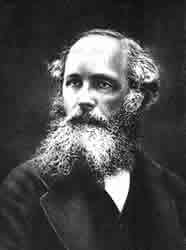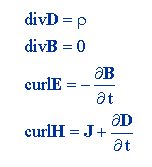James Clerk Maxwell (1831)

Source: Wikimedia Commons, author unknown (Public Domain)
James Clerk Maxwell was born in Scotland in 1831. He is generally considered the greatest theoretical physicist of the 1800s, if not the century's most important scientist. He combined a rigorous mathematical ability with great insight into the nature of science. This ability enabled him to make brilliant advances in the two most important areas of physics at that time (electromagnetism and a kinetic theory of gases), in astronomy, and in biology as well.
Maxwell was a physicist who is best known for his work on the connection between light, electricity, magnetism, and electromagnetic waves (traveling waves of energy). "Maxwell's Equations" are the group of four equations that show his greatness. This simple group of equations, together with the definitions of the quantities used in them and auxiliary relations defining material properties, fully describe classical electromagnetism. He discovered that light consists of electromagnetic waves. He not only explained how electricity and magnetism are really electromagnetism, but also paved the way for the discovery and application of the whole spectrum of electromagnetic radiation that has characterized modern physics. Physicists now know that this spectrum also includes radio, infrared, ultraviolet, and X-ray waves, to name a few.
Maxwell's second greatest contribution was his kinetic theory, especially the part dealing with the distribution of molecular speeds. In developing the kinetic theory of gases, Maxwell gave the final proof that the nature of heat resides in the motion of molecules. The kinetic theory of gases explains the relationship between the movement of molecules in a gas and the gas's temperature and other properties.
Maxwell also made important contributions in several other theoretical and experimental fields. Early in his career he figured out and then demonstrated the principles governing color, color vision, and how eyes work. He used a green, red and blue striped bow in making the world's first color photograph of an object. He hypothesized that the rings of the planet Saturn were made up of many small particles, and was proven right when satellites visited Saturn in the 1970's and later.




